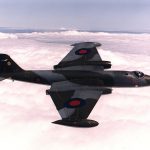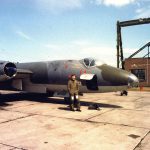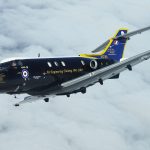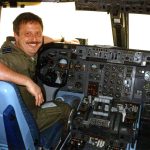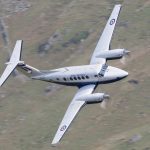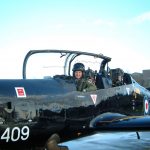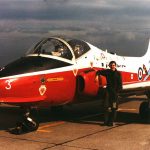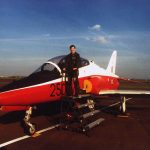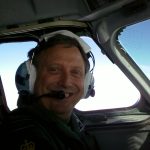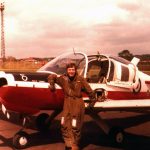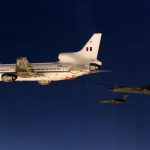IRT Debrief Digest – Capt Steve Oddy – September 2023
My comments are in red.
Ice.
OAT checks are often rather sparse in the cruise, especially on the off-airways leg. In addition, when icing is encountered and the checks are carried out, the prop heat switch is checked but rarely the ammeter – the prop anti-ice is only working if it’s switched on and there’s sufficient current showing on the gauge. However, on the Seneca V, checking the ammeter on the MFD “Engine” page is unnecessary as a red PROP HEAT FAIL warning will occur on the CAS if heating on any blade fails – see the system description on the Prop De-Ice page.
Many applicants forget that the heater/defrost is an essential element of the anti-icing precautions as the freezing level is approached.
Log Keeping.
Both on the IR and CPL Skill Test a log must be kept that allows the reconstruction of the flight. The skill of log keeping is best taught from the earliest opportunity so that it becomes second nature. As well as ETAs and ATAs, the log should include service, frequency, heading, level and SSR changes as a minimum, ideally with the time of change.
The log should not be prepared pre-flight to include just about all of the possible frequencies required during the flight – these are on the appropriate charts and plates. It is quite possible to fly with a pen/pencil clutched in the right hand for instant use (unless, like me, you’re left handed).
On G1000 equipped aircraft, use of permanent marker pens is prohibited by NOTAC to prevent the possibility of leaving marks on a G1000 screen – they cannot be removed!!
Fuel Log.
Applicants should be aware of the fuel required to complete the planned flight at the start of each leg and should note the fuel remaining on their PLOG.
We know that the gauges in many older light twins (excluding the Seneca V) are awful, but they still give a ballpark fuel and planning is still relevant to possible diversions etc.
See notes on Seneca V fuel planning.
Cruise Climb.
Cruise climbing is often carried out untidily. Even for 1000 ft climbs some applicants climb at Vy and full power giving themselves all sorts of problems stabilising the climb and leveling out. In addition, correct use of propeller and mixture controls is often missing.
In the Seneca V, for small climbs of 1000 ft or less, increase the MAP to 32″ and climb at 120kts keeping the RPM at 2200. Monitor the TIT carefully as the mixture may need to be richened slightly if the TIT increases significantly.
Briefs.
In-cockpit position reports and copious pre-descent briefs are not normally required on the IR. The IR is a simulated single-pilot commercial flight with no special rules – applicants need do only what is required of them by ATC and current legislation.
Mixture Control.
Some applicants are failing to lean the mixture in the cruise, especially the cruise between destinations one and two. Those who do try to lean, often do so incorrectly and pay no attention to the 2 EGT/TIT gauges (TIT gauges on the Seneca V).
We are seeing more reference to the temperature gauges now, but some applicants do not seem to realise that the response to a mixture change is not instantaneous, leading to extended periods of ‘playing around’ with the mixture controls at the expense of flying the aircraft. Other students sometimes quickly lean to beyond peak temperature and almost shut the engines down. The possibility of inaccurate fuel flow and/or temperature gauges also needs to be considered.
Given the accuracy of the Seneca V fuel flow gauges, it has been found that setting a fuel flow of 12.5 gal/hr in the cruise is always a safe and fast compromise rather than carrying out the full leaning-to-peak TIT technique.
Autopilot.
A serviceable autopilot may be used at the examiner’s discretion during the cruise and descent portions of the flight. Altitude, vertical speed and heading modes may be used but not navigation mode. Autopilots shown in the deferred defects log as unserviceable are not to be used.
Applicants frequently select Altitude mode when the aircraft is not exactly at the altitude or level they require. It is not acceptable to fly a leg using the autopilot maintaining, say, 4460ft instead of 4500ft. Applicants should know how to use the autopilot to climb or descend to the correct level.
See my guidance for use of the autopilot during the IRT
Altimetry.
A significant number of applicants have been unfamiliar with their Ops Manual rules regarding altimetry. Errors have included:
- setting QFE on both altimeters;
- setting SPS on both altimeters;
- leaving RPS or QNH on the standby altimeter while making an approach elsewhere.
Our strong recommendation would be to set the standby altimeter to local QNH for departure and then to the arrival airport QNH as soon as the weather has been obtained. There is little merit in resetting the standby altimeter to RPS in the short airways cruises flown on an IRT.
In the descent we see little or no cross-checking of the altimeters in order to confirm serviceability and correct settings. Frequently the standby altimeter is not reset until the Initial Approach Checks and then only lip-service is paid to the requirement to cross-check the altimeters.
EFIS equipped aircraft normally have the facility to select ‘Std Baro’ instead of just dialing 1013 hPa. Not only is this more accurate, but when the Transition Alert feature is setup correctly on the G1000 it helps candidates to avoid making a level bust when climbing above transition altitude or, perhaps more importantly, when descending below the transition level . If the Transition Alert feature is set correctly, the baro readout will start to flash when climbing above the transition altitude if ‘Std Baro’ has not been selected on the altimeter. It is now generally the case that airline crews who have a ‘Std Baro’ selection on their altimeter will regard 1013 only as a QNH or RPS setting. See guidance for the use of the Baro Transition Alert feature of G1000,
Flashing indications in the cockpit are normally an indicator of error or failure and so should be avoided. If 1013 has been set and it starts to flash, adjusting the Baro scale by 1 hPa up and down will cancel the warning (once you’ve analysed the situation and checked for errors).
Radar Service.
In the UK a Traffic Service is the preferred service outside controlled airspace. Whilst a Deconfliction Service would give a potentially safer flight, it is unlikely that the destination would be reached within the endurance of the aeroplane due to all of the avoidance turns that would be required.
With a Traffic Service, traffic information is given and it is up to the pilot to interpret the information, judge the hazard and react accordingly. On an IRT, if the traffic is unlikely to be a threat then a simple reply of “traffic not sighted” by the applicant is sufficient.
If the traffic is a potential threat then applicants should state this and ask the examiner if they are visual, pointing out or stating where the examiner needs to look.
If the examiner is confident that they will be able to spot the traffic then they will say so, otherwise the applicant must take the appropriate action, either by getting more detailed information from the radar unit or by initiating some form of vertical or horizontal avoidance.
Getting Ahead.
All of us teach students to use slack periods to get ahead of the game. However, some applicants are taking this to extremes. Trying to pick up an ATIS over 40 nm from the destination can lead to turning down the other box to hear the weather and then forgetting to turn it up again thus losing contact with their controlling agency. In addition, by the time we reach the destination, the weather code will often now have changed. Few applicants seem to know what to do about this – they have 2 choices: either to listen to the ATIS again or just say ask ATC what changes there are from the last to the current ATIS. Some applicants select their next navaid much too early, leading to a loss of current, relevant nav information.
ADF.
A number of applicants are unaware of the need to use the ANT position when identifying an NDB in the air (not always necessary with a G1000). Not only does it provide a clear ident signal, but it also, when deselected, it proves that the needle has positively locked on to a beacon. The only occasion when the use of ANT is not sensible is during the confirmatory ID of the ADF during the outbound and inbound legs of an approach or departure procedure.
VOR ID Feature.
A surprising number of applicants have no idea why you need to select ‘ID’ on/off on the GNS430/G1000 or why you can pull the volume knob out on a Bendix King Nav box.
Remember that, in the Seneca V, should the auto-ident feature not work (as can often be the case for the ILS at Bournemouth RW08), the Nav signal must be aurally identified instead.
Morse Idents.
Applicants generally listen to the Morse idents for nav beacons but many don’t actually check the Morse they hear and will announce, for example, that NAV 1 is tuned to Daventry when it has in fact coded HON. Another applicant was stumped when Compton coded TST. At the very least, applicants should recognise the Morse code for TST.
G1000 – DME Ident.
Some applicants are unaware that they need to listen to the DME ident to confirm that they’ve tuned the correct beacon even when the VOR auto-ident is displayed at the top of the screen.
ATC Liaison.
Applicants, to an extent, make their own luck on an IRT. Those who explain clearly to ATC what they want, and then fly in accordance with their clearance or in accordance with the plan they have told ATC about, generally have an easier time than those who keep ATC in the dark about what they need, or mislead then by missing out important points on their preferred routing. This is especially true when departing from a busy airport like Birmingham or East Midlands. If applicants say that they want to fly direct to X and are cleared to do so, then ATC will not take kindly to them making a 60° intercept on the radial they want to use, which was based on a line directly from the airfield rather than from their present position. If an applicant is taken off his pre-planned route by ATC and precise appreciation of position has become difficult, then asking for radar vectors to a suitable point or to achieve an intercept is far preferable to blundering around near CAS or danger areas. These problems should be easily overcome by use of the GNS430/G1000 ‘Direct To’ button. RT in general could be improved. Common errors are:
- Missing their callsign from replies to ATC.
- Repeating messages verbatim rather than replying with only the mandatory read-back items or using “wilco”.
- Not ‘completing the contract’ for radar services.
- Amenicanisms like “copy that” and “copy traffic” rather than “roger”.
Airways Clearance.
Instructions from an ATSU may be “remain outside of CAS …”; however, applicants sometimes read this back as “remain clear of CAS …”. The word ‘clear’ should be reserved for occasions when a positive clearance to do something is being given or read back. The difference between an ‘instruction’ and a ‘clearance’ is not well understood.
Applicants must be aware of the difference between (and read back accordingly) “Clear to join CAS ……at FL80” and “Clear to join CAS ……in the climb to FL80”.
Airways Join.
This point applies to any airway join where clearance has not yet been obtained. In the past, applicants approaching CAS without a clearance were entering an orbit to avoid controlled airspace; however, before they started the orbit they had made no attempt to gain a clearance from the controlling agency. If it is obvious that controlled airspace is fast approaching then the sensible thing to do is ask for a clearance to enter.
Airways Leg.
There is no statutory requirement to enter Class ‘A’ airspace as part of an IRT, but entry into some form of CAS is required to test the applicant’s ability to comprehend and fly in accordance with an ATC clearance. We will always set IR routes that require Class ‘A’ entry but, if we are subsequently unable to get an airways clearance, we will continue with the IR as long as one of our destinations is in CAS or requires a transit of CAS. Applicants should, therefore, be prepared to go to such destinations as Bournemouth, Bristol, Cardiff, East Midlands and Birmingham below their planned routing or on a slightly modified route to remain outside Class ‘A’ airspace.
All UK airways are designated as PBN routes and so the default method of navigation must use RNAV approved equipment (whether this is GNSS or a KNS-80 RNAV). However, terrestrial aids should always be available as a back-up. However, a suitable en-route VOR/DME should
normally be tuned and identified as a back-up during the climb into CAS. Approaching the destination airfield the arrival/approach navigation aids can be selected, especially after radar vectoring starts or if the clearance is directly to an approach aid.
Descent Planning.
Some applicants are not planning descents well. There is a lack of understanding of the expression ‘track miles’ and so, when ATC give track miles and ask if this is adequate, some interesting replies result. We would expect applicants to know that a light twin typically descends at 3 nm per 1000 ft (the same as a B747!).
Although it would be nice to limit descents to 1000 ft/min in the interests of passenger comfort, this is not a fail item. Conversely, descending at less than 500 ft/min could result in a fail. Descents between 700 ft/min and 1200 ft/min are unlikely to cause comment from the examiner.
Some applicants have the mistaken notion that slowing down in the descent without a significant power reduction will give a steeper descent angle, and so slow to 120 kts early on. This has 2 effects: they find it hard to maintain at least 500 ft/min and they annoy the controllers severely, both because of the low ROD and because, at places like Birmingham, they block the approach to subsequent high-speed traffic.
Some applicants have been increasing rpm in the descent contrary to the checklist in the belief that it will increase the descent rate; reducing MAP is a much more effective way of controlling the descent. Levelling from a descent at 140 kts and leaving the power alone will result in a rapid reduction to the required initial approach speed.
Initial Approach Checks.
Some applicants are putting the mixtures to ‘rich’ early in the descent and so over-cooling the engines. Mixtures should not be moved to rich until required in the checklist. We’ve recently seen an increasing number of applicants starting the initial approach checks by increasing rpm before reaching the beacon on a procedural approach – this is incorrect.
Off-airways Transit Altitudes.
The Daventry/Birmingham/East Midlands CTA has a transition altitude of 6000ft and we are finding applicants who are unaware of the lower transition altitude found elsewhere. If a transit is flown initially above the TA then an IFR semi-circular level must be used. However, if the transit enters an area where the transition altitude is above the cruising level then an adjustment must be made such that the aeroplane is now flying at an IFR semi-circular altitude. This is especially important when approaching Compton on the return from Bournemouth to Oxford. Similarly, when departing from, say, Cardiff, where the TA is 6000ft, applicants may be cleared initially to 5000ft altitude; on leaving CAS it is the applicant’s responsibility to adjust to a flight level to maintain compliance with IFR. If an altitude is flown it must be at or below the TA for the area in which we are flying. Few applicants know what IFR actually are.
Off-airways Navigation 1.
Applicants need to be able to set course from their first destination without first setting up the GNSS. Too many times we see applicants who have been cleared ‘own navigation’ remaining on runway heading while they frantically try to set the GNSS up or, just as bad, start turning and then try to sort the GNSS out in the turn. Once cleared, applicants should turn directly onto a DR heading (their PLOG should show one) and, only when steady, should they attempt to set up the GNSS.
Off-airways Navigation 2.
Some direct routings to the second destination can put the aeroplane close to or even inside a parachute area, danger area or HIRTA. Whilst the route will need to be modified slightly to avoid the hazard, it is not acceptable to generate huge dog-legs which give excessive clearance. For example, although initially tracking the DTY 090° radial from Cambridge will help avoid EGD 206 when going to CIT, it is not acceptable to maintain the radial until intercepting the 034° radial from CIT. There should be no problem with intercepting, say, the CIT 070° radial.
Radar Handover.
If a service is being obtained from a military radar unit during the transit home, that unit will normally hand you over to the next appropriate unit in good time without you needing to make a request. However, civilian radar units may not be so proactive and will wait for you to request a handover; they may not, in any case, be able to arrange a handover and so you will need to free-call the next agency. You need to consider at what range you want to start receiving a service from your destination airfield and take steps to effect this as necessary. You should be in communication with them at least 10 minutes flying time away.
Initial Radio Calls.
There is sometimes a requirement for a free-call to the next agency. Many applicants seem completely unaware of the implications of the expression ‘free-call’ and have little idea of the content of an initial call to an agency as laid out in CAP413.
GNSS Navigation.
When using the GNSS for navigation, applicants should set the HSI course pointer to GPS and not try to just follow the magenta line on the MFD. Applicants should therefore know what full-scale CDI deflection represents and how this is affected by Terminal and En-route GPS modes.
DOC.
A number of applicants have shown a disregard for the DOC of the beacons, both NDB and VOR, they are attempting to use. This has varied from blasting the examiner with white noise while they try to code a beacon that is well out of range, to stating that they are tracking a beacon in a similar position. There is nothing wrong with tuning and identifying a beacon when it is a little out of range in anticipation of using it when it is in range; this includes identifying an ILS when outside 35°. However, for the purposes of the IR, applicants should make it clear to the examiner that they are navigating by DR until the beacon is in DOC.
On the subject of coding and white noise, when flying a Seneca II aircraft, it is pointless trying to code a VOR or ILS when the ‘NAV’ flag is present on the HSI or OBI.

